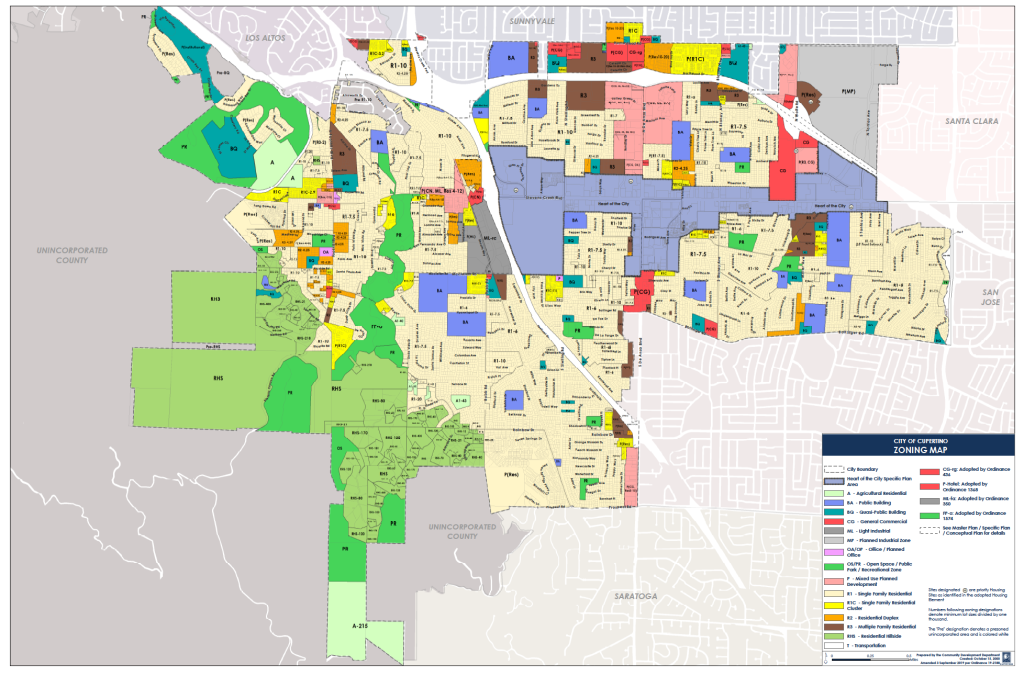On January 10, 2024, Cupertino settled a lawsuit filed by California Housing Defense Fund and Yes In My Back Yard (YIMBY) for missing its state-mandated Housing Element deadline. According to YIMBY Law, whose slogan includes “Sue the Suburbs,” about a dozen Bay Area jurisdictions have been sued for missing their housing-element deadlines, including Palo Alto, Burlingame, and the County of Santa Clara.
YIMBY Law claims that nearly half of Bay Area cities remain out of compliance. Their complaint against Palo Alto drew the ire of residents who commented that the lawsuit is a scam used to raise money by organizations that are “backed by investment firms, developers and real estate lobbies.”
Total Cost Unknown
To settle the lawsuit, Cupertino paid YIMBY Law and California Housing Defense Fund, $6,000 and $9,000 respectively. The cities of Cupertino, Palo Alto and Burlingame also hired the law firm Goldfarb & Lipman for their defense. Cupertino has paid its contract attorney tens of thousands of dollars in 2023, but it is unknown as to how much was spent on this lawsuit because the City uses the firm for other housing-related issues. Santa Clara County appears to have used its in-house counsel to defend itself from a similar lawsuit filed by Californians for Homeownership, an organization that is “financed and controlled by the California Association of Realtors.”1
Environmental Consequences
As part of the settlement with YIMBY Law and CalHDF, Cupertino agreed to exempt its entire Housing Element from the California Environmental Quality Act (“CEQA”). This saves time and expedites development projects, but silences the public’s environmental concerns.
In spite of the financial and environmental costs to the City, Vice Mayor J.R. Fruen, who has been endorsed by YIMBY organizations and represented them in legal cases, was positive about the lawsuit. Via the Mercury News, Fruen stated, “the city is right to welcome the result.”
Via San José Spotlight, Councilmember Kitty Moore countered “CEQA involves the public with public disclosure of environmental impacts to mitigate those impacts as possible, and to ultimately keep workers and residents informed and safe.” According to the New York Times, due to semiconductor manufacturing, “Santa Clara County is riddled with 23 toxic Superfund sites, more than any county in the country.” Notably, Councilmember Moore, who uncovered toxic waste at the former Vallco site, championed to have the site remediated in order to protect human health. Her actions spurred the County Department of Environmental Health to force a cleanup.
Moore emphasized, “This exemption from CEQA is not a win for anyone.”
Sources:
- 1 – Public Portal Superior Court of California, County of Santa Clara https://traffic.scscourt.org/ (case numbers 23CV410811, 23CV410817, 23CV410822)
- Halstead, Richard, “Housing Lawsuits against Marin Cities funded by realtors” Marin Independent Journal, 16 February 2023, https://www.marinij.com/2023/02/15/housing-lawsuits-against-marin-cities-funded-by-realtors/ Accessed 28 January 2024
- Nieves, Evelyn, “The Superfund Sites of Silicon Valley” The New York Times 26 March 2018 https://www.nytimes.com/2018/03/26/lens/the-superfund-sites-of-silicon-valley.html. Accessed 27 January 2024.
- General Information about CEQA: https://opr.ca.gov/ceqa/getting-started/
- Public Portal Superior Court of California, County of San Mateo https://www.sanmateo.courts.ca.gov/ (case number 23-CIV-00519)
- City of Cupertino online Public Records for Resolutions https://records.cupertino.org/WebLink/Browse.aspx?id=873105&dbid=0&repo=CityofCupertino
- Sheyner, Gennady, “Housing nonprofits drop suit against city of Palo Alto: YIMBY and California Housing Defense Fund request dismissal of complaint after Palo Alto approves its Housing Element” https://www.paloaltoonline.com/2023/07/11/housing-nonprofits-drop-suit-against-city-of-palo-alto/ Accessed 27 January 2024
- Nguyen, Tran, “Santa Clara County sued for missing housing plan deadline,” San Jose Spotlight, 8 February 2023, https://sanjosespotlight.com/santa-clara-county-sued-for-missing-housing-plan-deadline/. Accessed 27 January 2024.
- Freimarck, Annalise, “Advocates cheer Cupertino judgement on affordable housing.” San Jose Spotlight, 17 January 2024, https://sanjosespotlight.com/advocates-cheer-cupertino-judgement-on-affordable-housing-development-builders-remedy/. Accessed 28 January 2024.
- Hase, Grace, “Cupertino settles YIMBY housing lawsuit, agrees to ‘builder’s remedy’ penalty,” The Mercury News, 17 January 2024, https://www.mercurynews.com/2024/01/17/cupertino-settles-yimby-housing-lawsuit-agrees-to-builders-remedy-penalty/. Accessed 25 January 2024.
- Fruen employed by Yimby organization https://ttabvue.uspto.gov/ttabvue/v?pno=91269608














